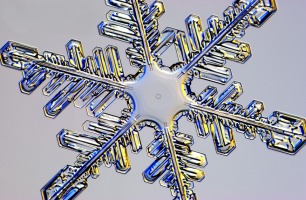

- Chemical Formula: (Y, Ce, U, Fe)3(Nb, Ta, Ti)5O16, Yttrium Cerium Uranium Iron Niobium Tantalum Titanium Oxide.
- Class: Oxides and Hydroxides
- Uses: A minor ore of rare earth elements and uranium, sometimes cut as a gemstone and as mineral specimens.
Specimens
Samarskite, whose exact name is samarskite-(Y) (the Y is for the yttrium),
is one of several Rare
Earth Oxides. These rare earth oxides form from the leftover elements
that other minerals seem to not want. Other rare earth oxides such as
Samarskite is found in rare earth rich granite pegmatites, a slow cooling igneous intrusive rock. Samarskite is associated with quartz, feldspars, columbite, tantalite and other rare earth minerals. Samarskite is common enough and locally abundant enough that it has potential to be a valuable resource for its rare earth metals. But it is its gemstone use that is what is odd about this mineral. Samarskite can be cut into attractive gems and used as cabochons, although since the stones are slightly radioactive, their use as wearable gemstones should be quite ...well...risky!
As mineral specimens, samarskite can be a nice addition to one's collection. Good crystals are rare, but prized when found. Although the color is usually just a velvety black the luster is generally high and striking. Remember, this is a radioactive mineral and should be stored away from other minerals that are subject to damage from radioactivity and of course human exposure should be limited !
PHYSICAL CHARACTERISTICS:
- Color is dark pithchy to velvety black to dark brown.
- Luster is vitreous to resinous and fresh surfaces can have a submetallic luster.
- Transparency: Crystals are nearly opaque.
- Crystal System is orthorhombic; 2/m 2/m 2/m
- Crystal Habits include stubby prismatic crystals often embedded in the matrix of the host pegmatite; as well as granular and massive.
- Cleavage is poor in one direction.
- Fracture is conchoidal.
- Hardness is 5 - 6
- Specific Gravity is approximately 4.3 - 5.87 (heavy for non-metallic minerals). Extreme variation caused by variable composition of component metals.
- Streak is reddish brown.
- Other Characteristics: Radioactive and crystals/specimens are often coated with a limonite like earthy coating.
- Associated Minerals include quartz,
feldspars,
euxenite,
fergusonite , monazite, columbite, tantalite, allanite, gadolinite, and zircon - Notable Occurrences include the Ural Mountains of Russia also found in Iveland, Satersdalen, Norway; Sweden; Divino de Uba, Minas Gerias, Brazil; Madagascar and Mitchell County, North Carolina, California, Maine, Colorado and Connecticut, USA.
- Best Field Indicators are luster, fracture, color, streak, radioactivity, associations, environment and specific gravity.





